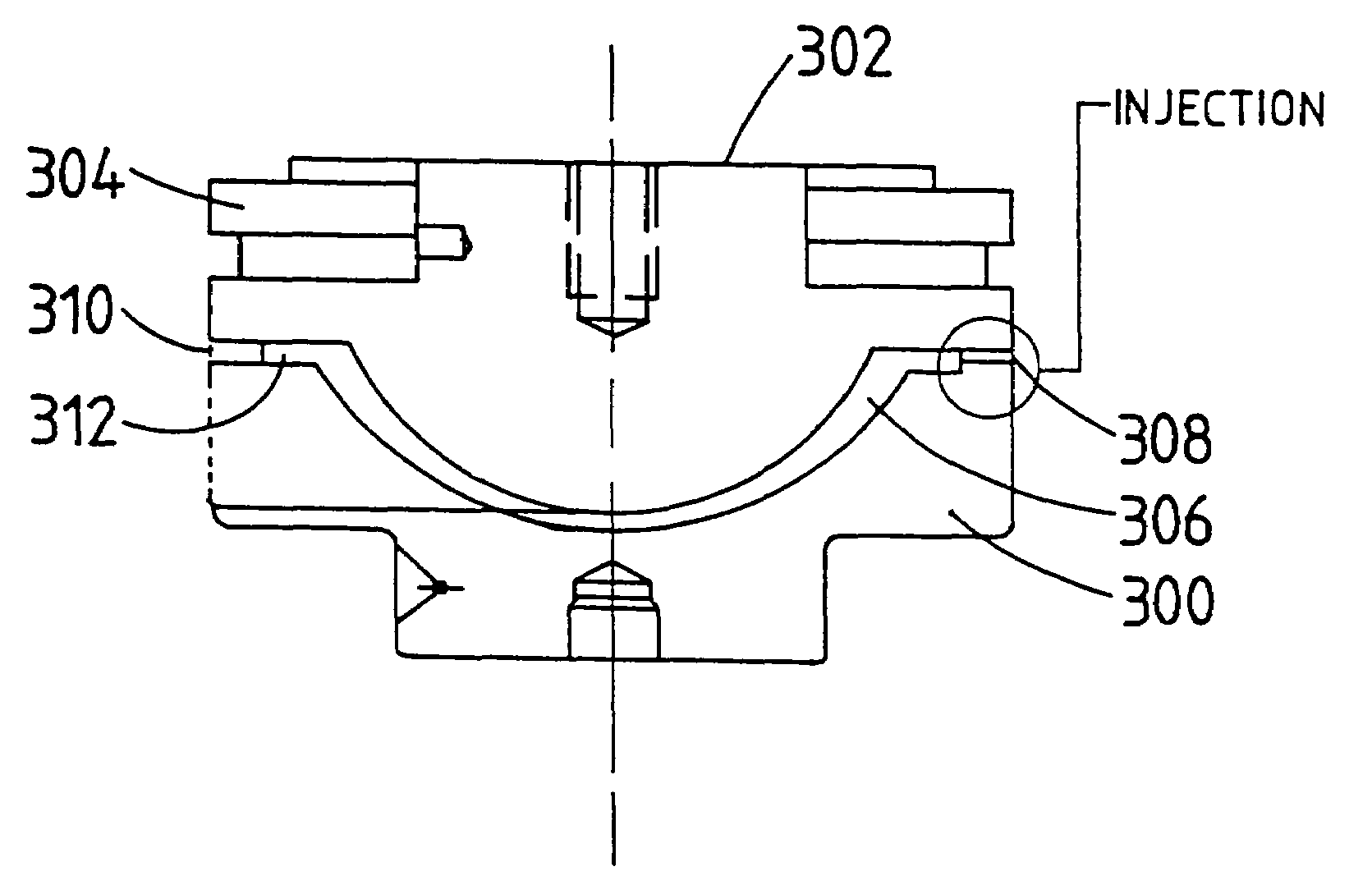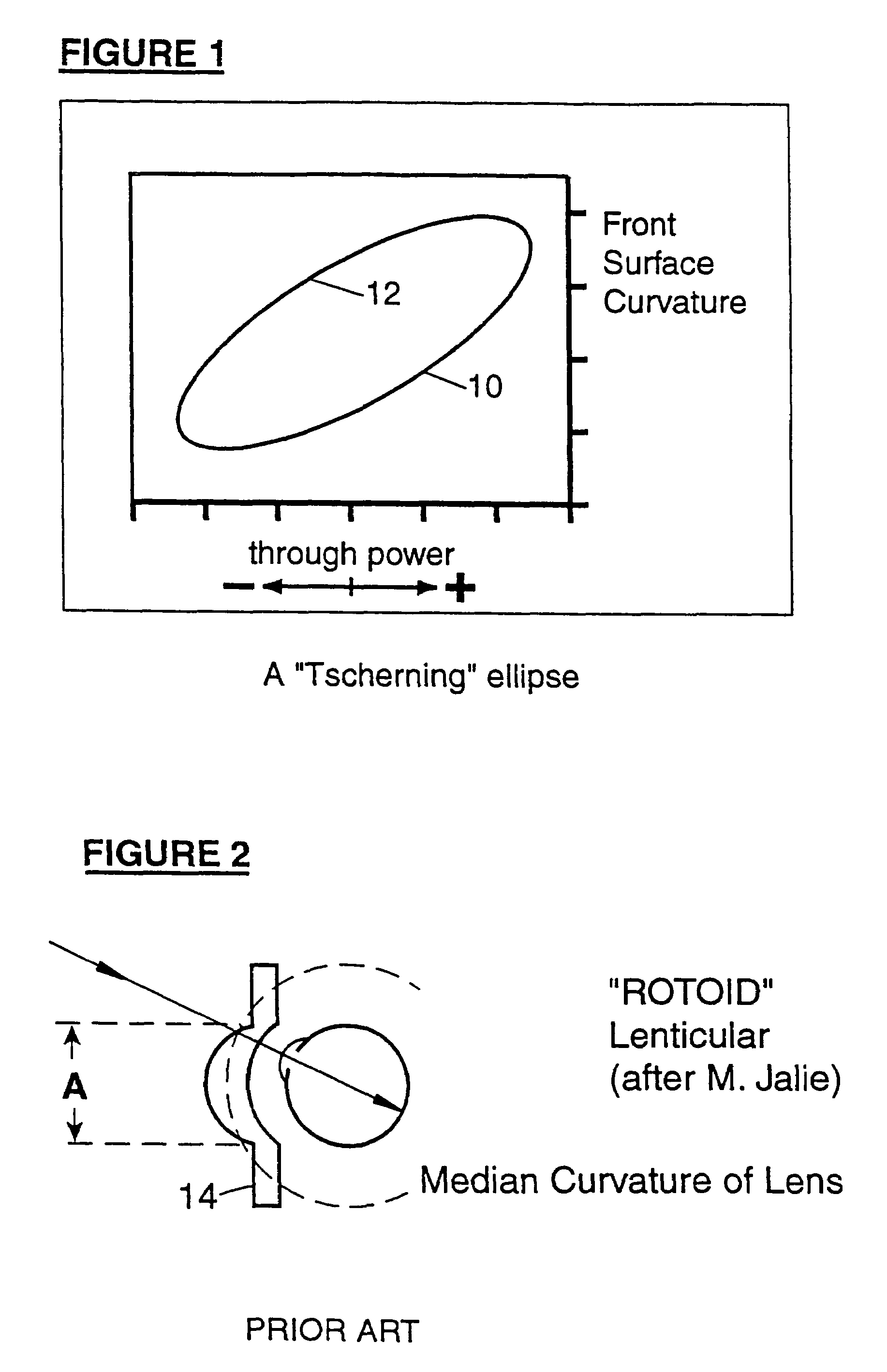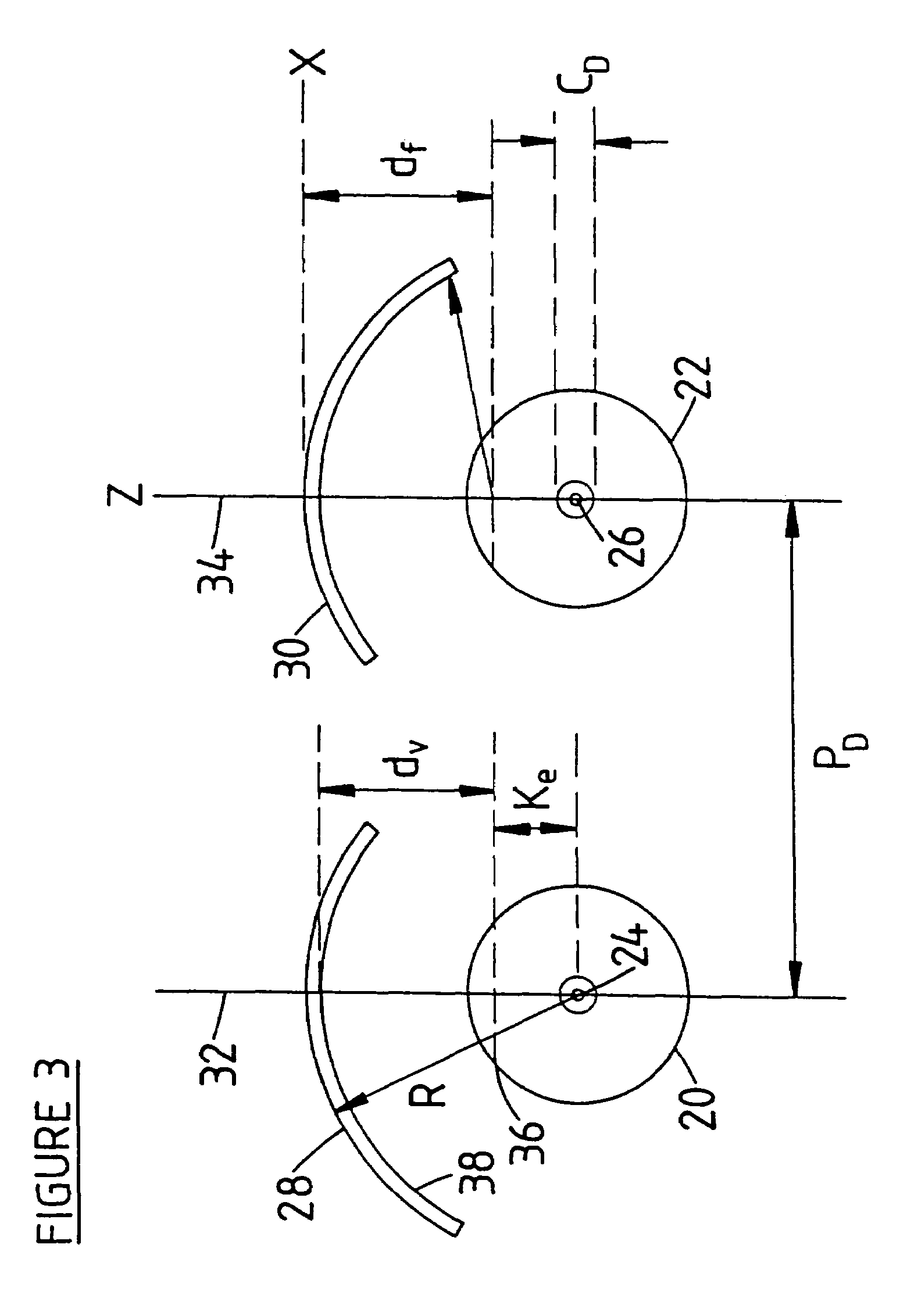Method of making wide field spherical lenses and protective eyewear
- Summary
- Abstract
- Description
- Claims
- Application Information
AI Technical Summary
Benefits of technology
Problems solved by technology
Method used
Image
Examples
example 1
[0149]Table 1 shows a comparison of the calculated performance of a polycarbonate lens made in accordance with the present invention and a conventional low base curve lens.
[0150]
ConcentricformConventionalIndex of refraction1.5861.586Power−3.00−3.00 dioptersThickness2.02.0 in mmFront Surface Curvature (1.53016.004.00 diopterstooling indexFront Surface Radius33.1132.5 mmOptical power of front surface17.74.4 diopters (higher due to1.586 index)Paraxial Magnification0.970.96Apparent field of view130105 in degrees, for the edgeoutline of FIG. 10(a)Optical Values at 30 degree eyerotation:Distortion−1.10%−3.10%Astigmatism0.020.17 dioptersMean Power Error0.070.025 dioptersRMS Power Error0.070.09Chromatic Abberation0.110.16 prism diopters
example 2
[0151]FIG. 19 illustrates a calculated comparison between a series of steeply curved spherical lens elements of −6 D, −3 D and +3 D power [FIGS. 19(a), (c) and (e), respectively] with corresponding low base curve Sola Perma-Poly™ stock lenses [FIGS. 19(b), (d) and (f), respectively].
[0152]The steeply curved spherical lens elements have essentially identical, spherical front surfaces of 16 D as shown in the lens cross sections 400. Generally, the steeply curved spherical lens elements provide superior peripheral distortion. The lenses of FIGS. 19(a) and 19(c) also exhibit reduced RMS power error in the minus prescriptions.
example 3
[0153]FIG. 20 illustrates a calculated comparison between two steeply curved spherical lens elements with a 16 D front surface −3 D through power and a back surface cyl correction of −2.
[0154]The lens of FIG. 20(a) has a conventional donut torus back; the lens of FIG. 20(b) has an all circular meridia back of the type described above. The latter exhibits superior RMS power error and somewhat improved distortion.
PUM
| Property | Measurement | Unit |
|---|---|---|
| Length | aaaaa | aaaaa |
| Length | aaaaa | aaaaa |
| Length | aaaaa | aaaaa |
Abstract
Description
Claims
Application Information
 Login to View More
Login to View More - R&D
- Intellectual Property
- Life Sciences
- Materials
- Tech Scout
- Unparalleled Data Quality
- Higher Quality Content
- 60% Fewer Hallucinations
Browse by: Latest US Patents, China's latest patents, Technical Efficacy Thesaurus, Application Domain, Technology Topic, Popular Technical Reports.
© 2025 PatSnap. All rights reserved.Legal|Privacy policy|Modern Slavery Act Transparency Statement|Sitemap|About US| Contact US: help@patsnap.com



